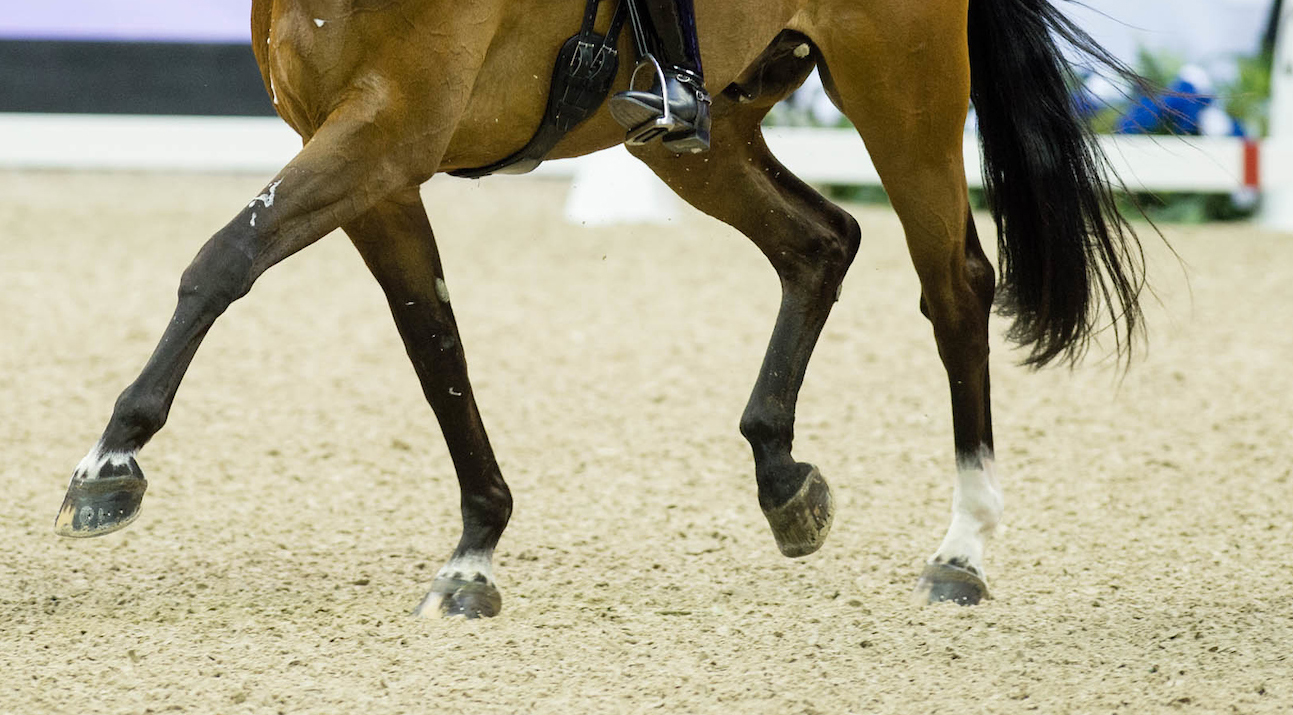What sets apart the horse who has amazing expression in his work from others? If you were to ask an engineer or someone who studies movement, he or she would use biomechanics to analyze the question. Biomechanics is the study of the forces that affect movement of the body. It examines how muscles, bones, tendons and ligaments operate together for a horse to walk, passage or perform lateral movements.

Different anatomical structures work in synchrony. The bones are the support structure. They are rigid and provide a framework. The joints’ anatomy dictates their degree of mobility (range of motion). Ligaments are the connections between bones, frequently involving joints. They are strong and flexible, allowing for distinct movement of a joint while providing stability. The muscles serve to propel the horse and to stabilize. For every muscle that moves a joint in one direction, there is typically a countering muscle that can pull the joint in the other direction. When the opposing muscles work in unison, both firing in balance, they stabilize joints. This equilibrium keeps the legs rigid when weight- bearing, the back from breaking and the head elevated and in motion with the horse’s movement.
The study of biomechanics provides the basis for understanding multiple facets of dressage, such as how neck position affects the forehand, back and hindquarters. It explains why it takes time for young horses to develop the strength to travel uphill with self-carriage and with an extended forehand. It also reinforces the importance of proper rider core strength and position to support the horse. It is necessary in comprehending how injuries and resulting pain can prevent horses from progressing and performing.
Biomechanics explains how riding with the neck lowered affects the entire length of the horse. This position produces traction through the ligaments and muscles of the topline, of the neck and back, causing the back to flex, or round. It moves the center of gravity forward with more weight distributed to the forehand, thus strengthening the muscles suspending the thorax. With the back flexing, the workload of the abdominal muscles increases. The advantages of incorporating exercises in a lowered neck position include strengthening the areas mentioned above.
An understanding of biomechanics can facilitate riding and training. Research has shown that the muscles involved with suspending the thorax within the shoulder blades affect the horse’s ability to move in an uphill carriage with a protracted forehand stride. These “sling muscles” raise the withers within the shoulder blades as they become stronger. The sling muscles consist of the pectoral muscles in the chest area and the serratus ventralis muscles between the rib cage and the scapula. Strength and training of these muscles lifts the front. As the front end raises, the hind end can sit and accept more weight to propel the horse.
Working in an uphill carriage or with the neck lowered can have positive and negative effects on a horse’s body depending on the nature of his biomechanics. The constructive effects of work done correctly and progressively are strengthening of the target areas and the horse learning to carry himself. Training with the head lowered could potentially stress an existing front leg problem by shifting the center of balance forward. By the same token, it can be a helpful position in strengthening a horse with kissing spines (impinging dorsal spinous processes). An uphill position may not be obtainable for a horse with sacroiliac or hind-limb discomfort.
In the case of a horse who exhibits some kind of physical discomfort during training, a veterinarian frequently correlates his or her diagnosis of a specific area of soreness to what a rider is feeling or a sign the horse is showing. An example would be lower neck pain on the right preventing a horse from bending to the right or not picking up the right lead. Horses can have multiple areas of soreness. Biomechanics is key in understanding what problems are causing the signs the horse is exhibiting.
Biomechanics encompasses most aspects of riding and training. It is the science behind how a saddle interacts with the horse’s back, how a horse compensates for an unbalanced rider, what a rider feels with a lameness and more. It is not a necessity for a rider to comprehend all aspects of biomechanics of the horse, although it does enhance the understanding of training and riding.
Resources for Studying Biomechanics
Biomechanics can be approached from a superficial level to an in-depth study. The Internet is always a source with both valid and less-than-reliable information. Dr. Hilary Clayton has been one of the greatest sources of research and literature pertaining to equine biomechanics. She appears online in videos and articles and has papers available on many biomechanics topics.
For more comprehensive studies there are books on equine biomechanics. Biomechanics and Physical Training of the Horse by Jean-Marie Denoix is written for the rider/trainer with an overview of anatomy, biomechanics and analysis of specific riding exercises. The Dynamic Horse by Dr. Hilary Clayton thoroughly covers the science of biomechanics.
Scott Anderson, DVM, graduated from the Virginia/Maryland Regional College of Veterinary Medicine in 1984. He attended the Eastern School of Farriery and was a practicing farrier prior to becoming a veterinarian. He was one of the first veterinarians in the U.S. to become certified in equine acupuncture by the International Veterinary Acupuncture Society. He is also certified in veterinary chiropractic medicine through the American Veterinary Chiropractic Association. Owner of Woodside Equine Clinic, he specializes in sports medicine and lameness and is based in Ashland, Virginia.
Visit woodsideequineclinic.com.











